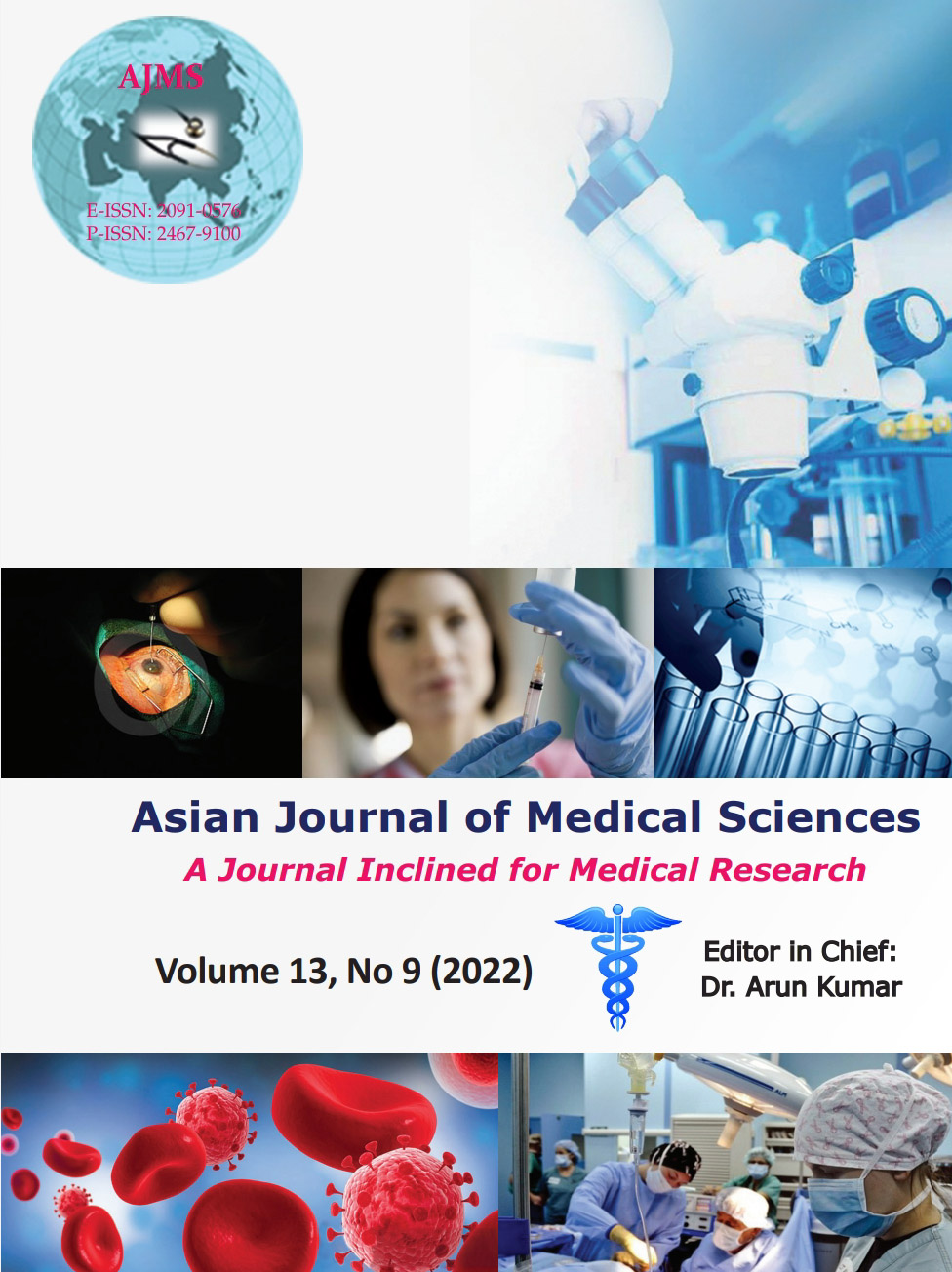Clinico mycological profile of Dermatophytosis in patients attending tertiary care hospital in Northern India
Keywords:
Dermatophytosis; Trichophyton rubrum; Tinea corporis; KOH Positive; Fungal pathogensAbstract
Background: Dermatophytoses refers to superficial fungal infection of keratinized tissue caused by keratinophilic dermatophytes. It is most common superficial cutaneous infection of stratum corneum affecting hair, nail, and skin.
Aims and Objective: The aim of this study was to study the clinico-mycological profile of dermatophytic infection that are prevalent in this region.
Materials and Methods: Samples were collected from 104 patients which included skin, nail, and hair samples after the detail history and examination of patients. The samples were subjected to direct microscopy and culture. Further identification was done by microscopic and macroscopic characteristics of fungal pathogens.
Results: A total of 104 cases were positive for dermatophytic infection. Among the dermatophytic infections, Tinea corporis (63.4%) was most common clinical type followed by Tinea cruris (18.3%). Males (66.3%) were affected more than females (33.6%) and the age group most affected was 31-45 yrs (46.2%) followed by 16-30 yrs (32.7%) in the current study. Of all the dermatophyte isolates T.rubrum was the most common (77.4%) cause of infection, followed by T. mentagrophytes (12.7%).
Conclusion: The present study reveals the varying trend in the incidence of dermatophyte species which is important to implement treatment regimens and to recommend control measures.
Downloads
Downloads
Published
How to Cite
Issue
Section
License
Copyright (c) 2022 Asian Journal of Medical Sciences

This work is licensed under a Creative Commons Attribution-NonCommercial 4.0 International License.
Authors who publish with this journal agree to the following terms:
- The journal holds copyright and publishes the work under a Creative Commons CC-BY-NC license that permits use, distribution and reprduction in any medium, provided the original work is properly cited and is not used for commercial purposes. The journal should be recognised as the original publisher of this work.
- Authors are able to enter into separate, additional contractual arrangements for the non-exclusive distribution of the journal's published version of the work (e.g., post it to an institutional repository or publish it in a book), with an acknowledgement of its initial publication in this journal.
- Authors are permitted and encouraged to post their work online (e.g., in institutional repositories or on their website) prior to and during the submission process, as it can lead to productive exchanges, as well as earlier and greater citation of published work (See The Effect of Open Access).




